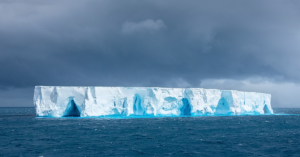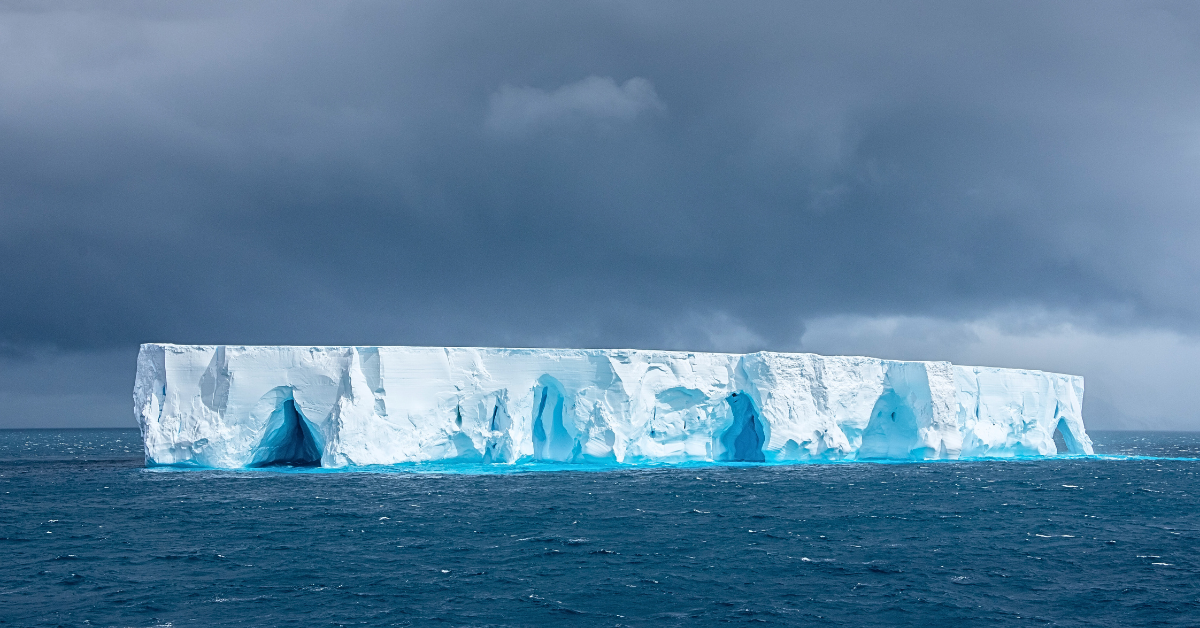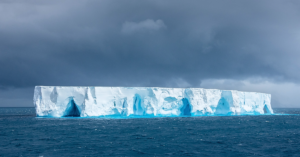
German Navy Tests First-of-its-Kind Unmanned Underwater Drone In Baltic Sea
December 17, 2024
Pakistan To Domestically Build First Major Commercial Cargo Ship After 40 Years
December 17, 2024

A23a, the world’s largest iceberg, has started drifting again after being stuck for over 30 years in the Weddell Sea.
The massive iceberg, weighing nearly a trillion tonnes and measuring twice the size of Greater London, broke away from Antarctica’s Filchner Ice Shelf in 1986 but remained grounded on the seabed until it began drifting northwards in 2020.
After breaking free, A23a’s movement has been anything but straightforward. For months, the iceberg was held in place by a rare ocean phenomenon called a Taylor Column-a spinning vortex of water caused by ocean currents interacting with an underwater mountain.
This unusual event caused the iceberg to remain trapped, rotating in one spot before finally escaping and continuing its journey northward.
Now, A23a is being carried by the Antarctic Circumpolar Current, a powerful ocean flow that circles Antarctica. Scientists estimate that the iceberg will drift toward the sub-Antarctic island of South Georgia.
Here, it will encounter warmer waters, which will likely cause it to break apart into smaller icebergs and eventually melt.
Scientists are closely monitoring A23a’s movements, not just for its size but also for its impact on marine ecosystems. Large icebergs like A23a are important for the ocean environment as they release nutrients when they melt.
These nutrients can support marine life in otherwise barren waters, turning them into thriving ecosystems.
Laura Taylor, a biogeochemist involved in studying A23a, discussed the importance of this research. Her team collected water samples from different points around the iceberg’s path- behind it, alongside it, and ahead of its route.
These samples will help scientists understand how A23a influences ocean nutrient levels, marine life development and carbon cycles. “We know icebergs deliver nutrients that stimulate life in the ocean, but the specific effects of icebergs of this size and origin and still unclear, Taylor said.
A23a has been a dominant feature in Antarctic waters for decades, holding the title of the world’s largest iceberg at various points.
Despite its staggering size, scientists explain that its breaking in 1986 was part of the natural life cycle of Antarctica’s ice shelves.
However, rising global temperatures have fastened the changes in the region, which has raised concerns about the stability of ice shelves and their long-term impact on sea levels.
Dr Andrew Meijers from the British Antarctic Survey discussed the scientific interest in the iceberg’s path. “It’s fascinating to see A23a moving again. Understanding its route and observing its effects on the surrounding ecosystem will provide critical insights,” he said.
As A23a drifts towards warmer waters near South Georgia, it will eventually break-up and melt further releasing vast amounts of nutrients, supporting new marine life and giving researchers a rare opportunity to observe the ecological influence of such a large iceberg.
References: NDTV, Interesting Engineering
Source: Maritime Shipping News


